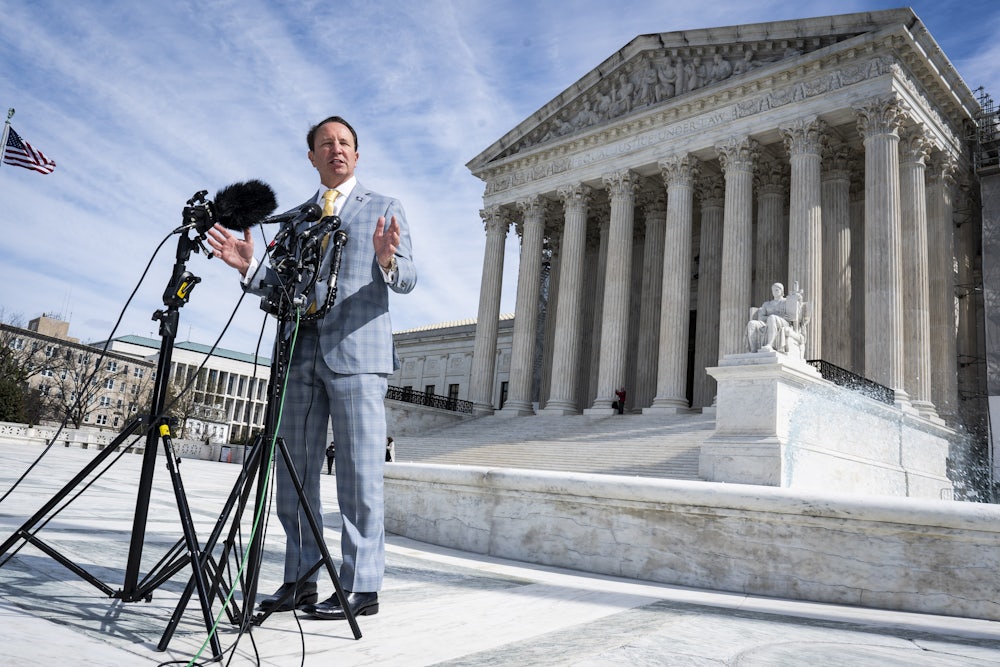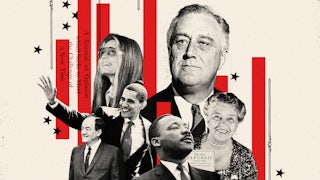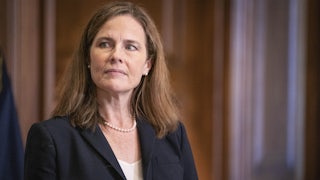A new Louisiana law will require its public schools to display copies of the Ten Commandments in classrooms. Most Americans might reasonably assume that such a law violates the establishment clause and a few Supreme Court precedents. They would be correct—and that is precisely the point.
“I’m going home to sign a bill that places the Ten Commandments in public classrooms,” Louisiana Governor Jeff Landry reportedly told a group of GOP state lawmakers and donors at a gala dinner last week in Tennessee. “And I can’t wait to be sued.”
His excitement for a court fight is justified. Ten years ago, it would have been unimaginable for the Supreme Court to sign off on such a bill. But anything seems possible these days with a 6–3 court, especially when it comes to religion and public education. In recent years, the justices have taken steps to de-secularize public education and enrich religious schools with taxpayer funds. Reintroducing sectarian religious materials into the schools—and demolishing the precedents that limit them—is a logical next step.
This should be an easy case if the justices follow precedent. In 1980, the Supreme Court heard a case about this exact issue. Kentucky had enacted a law requiring public schools to post copies of the Ten Commandments in classrooms. The copies themselves were acquired with private funds, and each of them carried a tagline that claimed, “The secular application of the Ten Commandments is clearly seen in its adoption as the fundamental legal code of Western Civilization and the Common Law of the United States.”
The justices saw through the ruse. When they agreed to review a challenge to the law, they also skipped holding oral arguments and immediately reversed the Kentucky court rulings that had upheld it. In an unsigned decision, the Supreme Court held that their placement violated the First Amendment’s establishment clause. The justices also brushed aside claims by state lawmakers that the law had a secular purpose.
“Posting of religious texts on the wall serves no such educational function,” the court concluded in Stone v. Graham. “If the posted copies of the Ten Commandments are to have any effect at all, it will be to induce the schoolchildren to read, meditate upon, perhaps to venerate and obey, the Commandments. However desirable this might be as a matter of private devotion, it is not a permissible state objective under the Establishment Clause.”
From the early 1960s until recently, the Supreme Court has also limited officially sanctioned forms of religious veneration or worship. In the 1962 case Engel v. Vitale, for example, the justices ruled against a New York state effort to recite government-written prayers in public school because it violated the establishment clause. Justice Hugo Black, writing for the majority, famously described it as violating the “wall of separation” between church and state. The court also later rejected efforts to establish mandatory Bible studies and silent prayer periods for their potentially coercive effects.
While Stone resolved the Ten Commandments question within schools, it persisted elsewhere. Displaying the Ten Commandments on public property became a familiar battle line in the American culture wars in the early 2000s. Roy Moore, the chief justice of Alabama’s Supreme Court at the time, lost a lengthy legal battle over a two-and-a-half-ton granite monument of the Decalogue that he had installed in the court building in Montgomery. That fight nonetheless catapulted him to political prominence. After Moore refused to obey a federal court order to remove the monument, the state judiciary stripped him of his office.
Two years later, the Supreme Court ruled in a pair of cases that some Ten Commandments displays on public property could be permissible. In one of the cases, where the court upheld a long-standing display on the Texas Capitol grounds, then–Chief Justice William Rehnquist noted that the display was less concerning than the one at issue in Stone. Quoting from precedent, he held that the court had been “particularly vigilant” about monitoring the establishment clause in public schools. The Texas display, by comparison, was a “far more passive use of those texts,” Rehnquist wrote.
Things have changed a bit in the two decades since those rulings. The Roberts court is far more friendly to religiously motivated litigants than its predecessors, and that friendliness only increased once the conservative majority grew to six justices in 2020. Some of the justices have adopted the position that “religious freedom” is in peril in the United States. Justice Samuel Alito has been particularly vocal about the perceived threat posed by secularism.
“The problem that looms is not just indifference to religion, it’s not just ignorance about religion, there’s also growing hostility to religion, or at least the traditional religious beliefs that are contrary to the new moral code that is ascendant in some sectors,” he said in a 2022 speech in Rome hosted by the University of Notre Dame’s law school. “The challenge for those who want to protect religious liberty in the United States, Europe, and other similar places is to convince people who are not religious that religious liberty is worth special protection.”
The Supreme Court has also opened the door to public funding of private religious schools. In the 2017 case Trinity Lutheran Church v. Comer, the court ruled in a 5–4 decision that Missouri’s Department of Natural Resources could not exclude a church-run daycare from a tire-recycling program that would resurface its playground. State officials had concluded that allowing it to participate would violate a state constitutional ban on funding religious institutions.
In the late nineteenth century, many states amended their constitutions to wall off taxpayer money from sectarian private education. These amendments were collectively known as Blaine amendments, after the Republican statesman James G. Blaine, who unsuccessfully sought to ratify a federal amendment on the matter in the 1870s. Critics then and now claimed that the amendments were driven by animus toward large numbers of Catholic immigrants who had begun to arrive in the United States.
Roberts, writing for the court, was thunderous in his condemnation. He implicitly compared the state officials’ decision to a 1829 bill by the Maryland General Assembly that sought to disqualify Jewish Americans from public office. In doing so, he equated a sectarian discrimination by one faith against another to secular neutrality. “The exclusion of Trinity Lutheran from a public benefit for which it is otherwise qualified, solely because it is a church, is odious to our Constitution all the same, and cannot stand,” he wrote.
By 2020, 37 states still had Blaine-type amendments in force in their state constitutions. But the court’s decision in Trinity Lutheran assured they would not last long. The Supreme Court effectively struck them down in Espinoza v. Montana Department of Revenue, later that year, by giving them a Hobson’s choice of sorts. “A state need not subsidize private education,” Roberts again wrote for a 5–4 majority. “But once a state decides to do so, it cannot disqualify some private schools solely because they are religious.”
Though it was technically decided on free exercise clause grounds, some of the conservative justices in Espinoza wanted to revisit the court’s establishment clause precedents as well. Justice Clarence Thomas urged his colleagues to revisit the matter in future cases in a concurring opinion joined by Justice Neil Gorsuch. “The Court’s current understanding of the Establishment Clause actually thwarts, rather than promotes, equal treatment of religion,” he wrote. “Under a proper understanding of the Establishment Clause, robust and lively debate about the role of religion in government is permitted, even encouraged, at the state and local level.”
In perhaps the most telling case, the Supreme Court sided with a high school football coach in Washington state, two years ago, who claimed he was fired for holding a “quiet personal prayer.” That description defied ample contemporary reports that the coach in question had led highly publicized prayers with students at school events and that some student-athletes felt pressured to join them—a disturbing First Amendment violation in and of itself. But the court’s conservative justices embraced the coach’s story nonetheless. He retook his old job, coached a single game, and then retired to hit the conservative media circuit.
Students and teachers always have the right to pray and exercise their faith in their personal capacities in schools. What have been absent for more than a half-century are official efforts to pressure or coerce them into doing so. Courts long recognized that the government has no role in prescribing or proscribing any particular faith to children, a duty that is properly reserved to their parents. If the court abandons that principle, it could have dire consequences for American religious pluralism.






